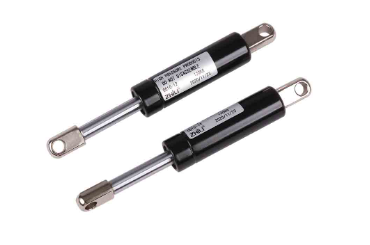If you are interested in our products ,please contact our team
Have you ever pondered the operation of a gas spring? But you'd be shocked at how frequently you actually utilize them.
Have you ever attempted to unlock your car's trunk? or lowered a desk-height office chair? You most likely used a gas spring too.
These practical springs have a plethora of everyday uses. Although they have many other functions, doors are where they are most frequently employed.
When a gas lift spring is in operation, pressurized gasses are used to move two distinct components: a piston rod and a cylinder.
As the two systems interact, the gas compression generates a powerful force that is proportionate to a rise in pressure.
A gas spring's strength is remarkable given that it may provide significant force even though it is small.
Prior to attaching a gas spring, confirm that it will fit inside the apparatus. The tolerance for installing a gas spring differs based on the size and expansion effort of the spring and is typically 0.08 in.
To obtain the appropriate tolerance, consult the supplier. Avoid using a gas spring with a small diameter core, a prolonged stroke, with high compressive forces if the situation warrants longevity and durability.
A gas spring's seal and piston shaft can be damaged by side loadings, which can also be prevented by using correct alignment.
You should consider end fittings with a pivoting attachment point or an angular joint because they dramatically lessen small side loads.
To eliminate side-load concerns completely, an installation expert can suggest the appropriate installation method and end fittings.

A lesser volume of oil is present in the pipe of gas springs. Initially, it greases the primary seal and rod, which is why this oil is crucial.
Additionally, it produces dampening at the completion of every stroke, especially in the final meter.
To place your spring correctly, keep in mind that the piston rod must face downward.
By direct interaction with the rod seal, this positioning prevents the oil from exfoliation.
More significantly, though, it makes sure the piston plunges further into oil, thereby lowering the speed at the point of extension.
However, at some juncture, you might discover that the pressure on your spring has become excessive.
There are several possible causes for this. At the stage of design, the technical information pertaining to size might have been inaccurate or unknowable.
It's also possible that the machine's functionality has altered.
Whichever the situation, you can manually modify and reduce the gas pressure, and force of extension force in your spring using the integrated spring valve.
A release valve is integrated into the studs of each spring's terminal fitting. To expel little quantities of nitrogen gas, just apply pressure on the adjustable knob after threading it into the stud.
We provide a complete line of motion control equipment, such as mechanical dampers and gas lift springs.
Kindly contact our support staff if you need on-site assistance. The assistance you require to ensure that your spring is specifically designed for your application is always available.